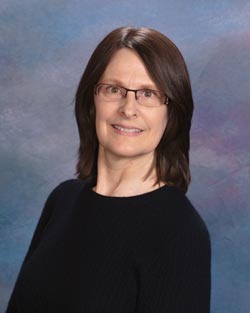 2014 National Executive Board Election Candidate for At-Large Two-Year College Representative
2014 National Executive Board Election Candidate for At-Large Two-Year College Representative
Sherry L. Savrda
Department of Physical Sciences, Seminole State College of Florida, Sanford, FL 32773
savrdas@seminolestate.edu
Education
- B.S. University of Central Florida, 1986, Physics summa cum laude
- M.S. University of Central Florida, 1991, Thesis: Electronic Quenching Rates for the A1Σ+ State of Sodium Hydride
- Ed. D. University of Central Florida, 2007, Dissertation: A Descriptive Framework for the Problem-Solving Experiences of Physics Students
Professional Experience
- University of Central Florida, Research Assistant, 1987-1991
- Lake-Sumter Community College, Physics and Mathematics Instructor, 1990-2003
- University of Central Florida, Teaching Consultant, 2002
- Seminole State College of Florida, Physics Professor, 2003-present
Honors
- Challenger Astronaut Memorial Fellowship, 1987-1988
- Lake-Sumter Pathfinder Award for Innovation in Education, 1997
- Distinguished Service Award, Florida Section AAPT, 1998
- Seminole State College Endowed Teaching Award, 2007
Memberships
- American Association of Physics Teachers
- Florida Section AAPT
- Phi Kappa Phi, Pi Mu Epsilon, Phi Theta Kappa
AAPT Activities
- AAPT Committee on Physics in Two-Year Colleges, 1996-1999, 2002-2005, 2010-2013, 2014-present, Chair, 2003-2005;
- AAPT National Nominating Committee, 2002-2004
- Florida Section AAPT, Executive Chain 1996-1999, President 1997-98, Section Representative 1999-2011
- Two-Year College New Faculty Experience Invited Workshop Leader, 2008, 2013
- Two-Year College Workshop Project Invited Workshop Leader 2000, 2002, 2005
- Two-Year College Quantum Optics Project Invited Workshop Leader 2001, 2003
- Two-Year Colleges in the Twenty-First Century Project Regional Coordinator, 1996-1999
- Introductory College Physics in the Twenty-First Century Project, Author, Associate Editor and Co-PI, 1999-2005
Commentary
As a graduate of a two-year college, I have first-hand knowledge of the important role that community colleges and other two-year institutions play in physics education. Many students in two-year institutions have no other avenues by which to begin their college education, either because of finances, family situations, or lack of a strong high school background. Yet many of these students, once entering college, find their calling and excel. AIP data shows that the number of two-year colleges offering physics has increased over the past decade, with 94% offering the algebra/trig-based course and 79% offering the calculus-based course. Two-year college enrollments in physics courses top 215,000 students, accounting for about 30% of total US physics enrollment. More importantly, the proportion of Hispanic and non-Asian minorities taking their first physics course is higher at two-year colleges than at bachelor’s degree-granting institutions.
Those figures help emphasize the importance of AAPT’s role in two-year college physics education. AAPT must continue to support two-year college faculty as they strive to maintain quality physics instruction in light of the current pressures in higher education, including declining budgets and business-minded organizational models. At the same time it is important that two-year college faculty support AAPT, so that the organization can continue to be the prime authoritative voice for what constitutes quality physics instruction. AAPT’s past work in supporting the Two-Year College Workshops, the Two-Year College New Faculty Experience, and other initiatives have influenced a generation of two-year college faculty. I look forward to continuing to work with AAPT to be a part of the organization’s future role in shaping quality physics education.

